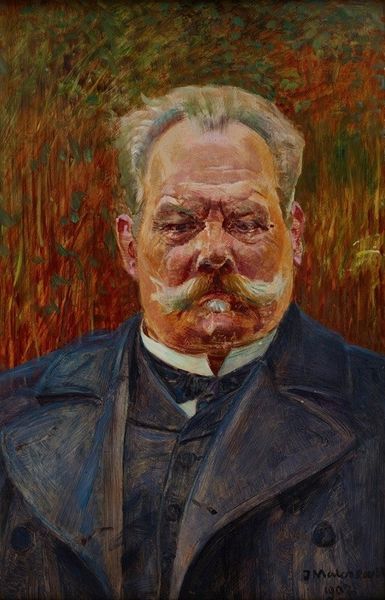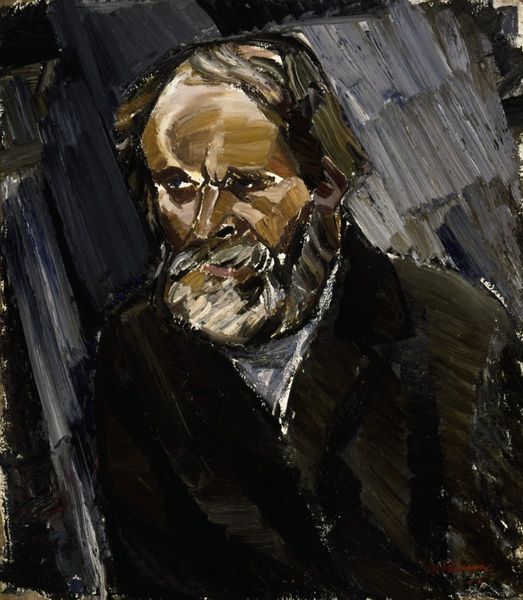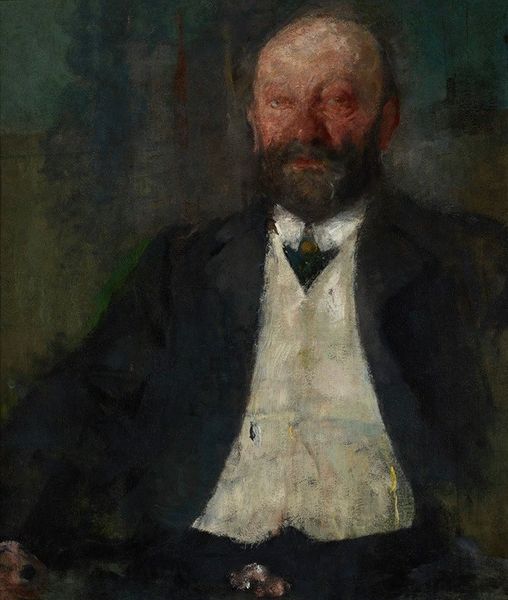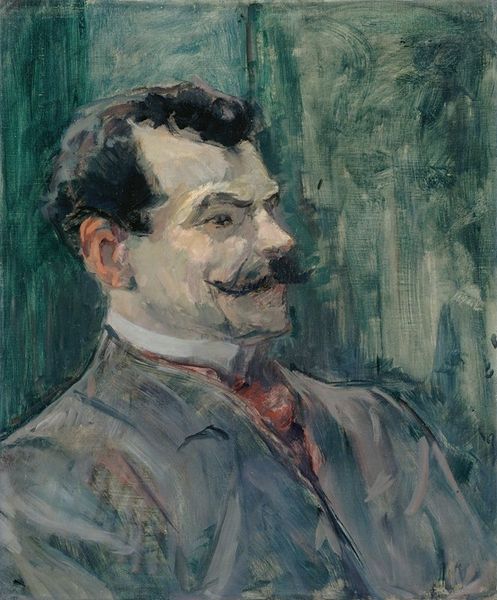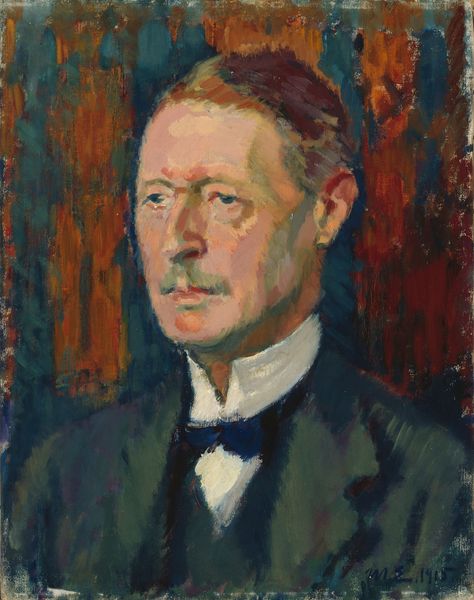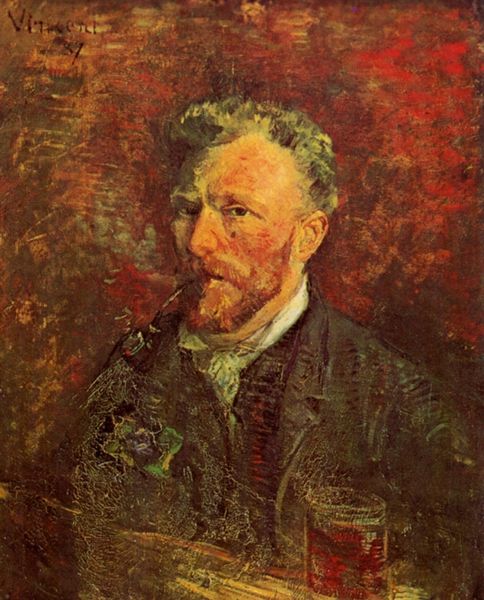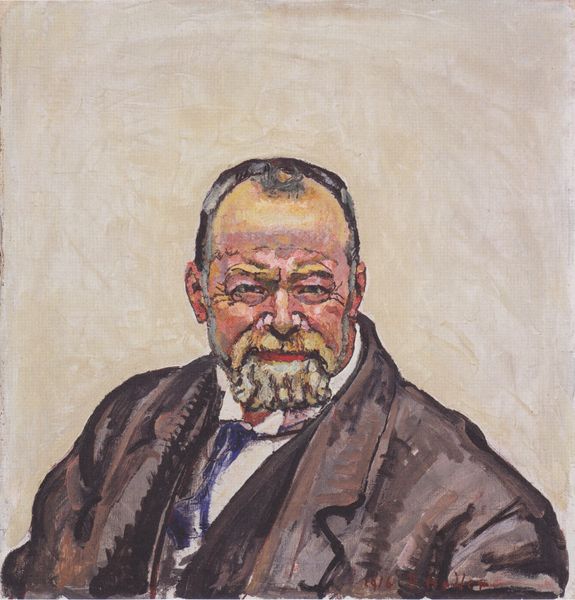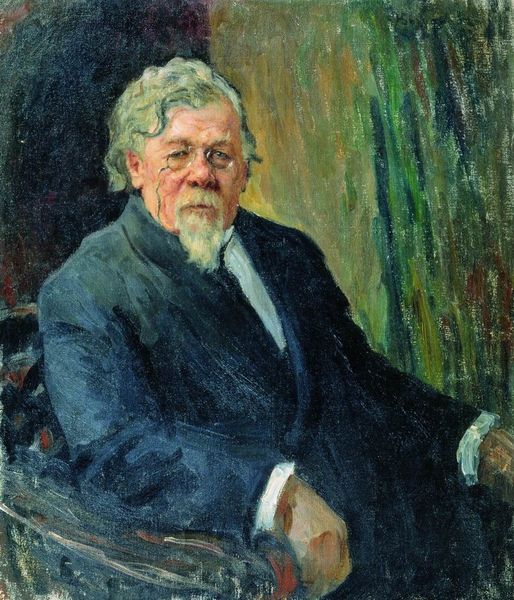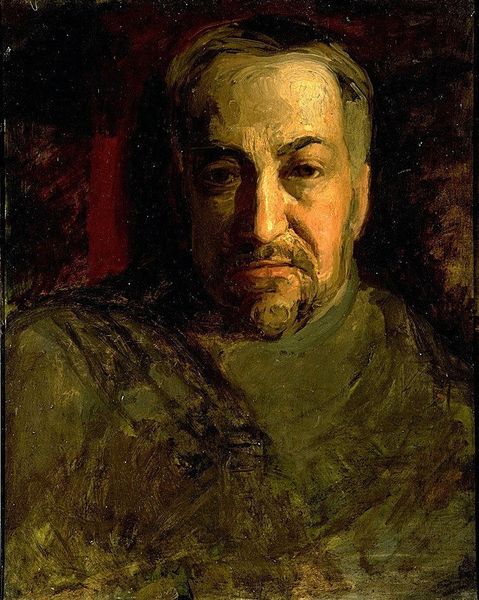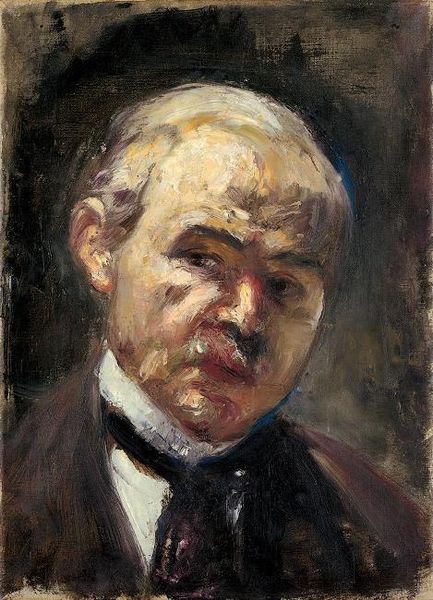
oil-paint, impasto
#
portrait
#
oil-paint
#
oil painting
#
impasto
#
post-impressionism
#
realism
Copyright: Public domain
Curator: Here we have Van Gogh’s “Portrait of Père Tanguy” from 1887, currently housed in the Ny Carlsberg Glyptotek in Copenhagen. Editor: It strikes me immediately by the almost palpable layering. The brushstrokes aren't just strokes; they feel like individual tiles, creating a vibrant, if somewhat unsettling, mosaic. Curator: Yes, the impasto technique is very prominent. But let’s consider Tanguy himself. He was more than just a subject; he was a paint grinder, an anarchist, and one of the first champions of the Impressionists, including Van Gogh. His tolerant shop served as an informal gallery. Editor: And a symbol of a haven, I suspect? Notice how the eyes, though tired, still hold a depth of understanding. And the color choices around them suggest warmth—a refuge. Curator: Precisely. Van Gogh used these portraits to explore the inner lives of his subjects, and to perhaps say something about himself, through Père Tanguy, Van Gogh allies himself with someone who understood artistic suffering and marginalization. Editor: There’s a compositional tension too, I feel, between the realism in Tanguy’s face, especially the weariness etched in his expression, and the abstracted background, filled with Japanese prints. The contrast makes him feel so much more vulnerable. Curator: These prints also function as a nod to Tanguy's own tastes and collecting habits, demonstrating Van Gogh's understanding and respect for his friend. The flatness of the prints plays off the thickly painted form of Tanguy. The background essentially reflects and celebrates him. Editor: It's a fascinating synthesis, a meeting of Western portraiture and the Eastern decorative arts. One celebrates the individual while the other builds an identity with pattern and symbols. It speaks to the complex ways humans are formed by society and culture. Curator: I see the cultural context reflected within Van Gogh's choice of elements here too, which speaks to Tanguy’s role in supporting art innovation, an important point to ponder today. Editor: Ultimately, the image, from my perspective, resonates through its textures—both physical and emotional. It makes me think about seeing and truly understanding.
Comments
No comments
Be the first to comment and join the conversation on the ultimate creative platform.


